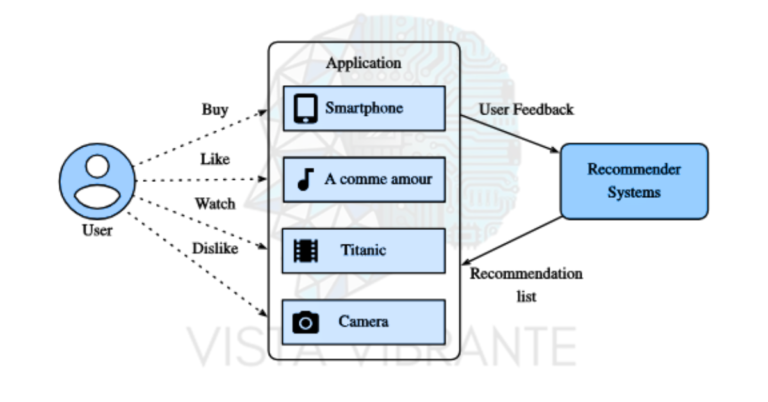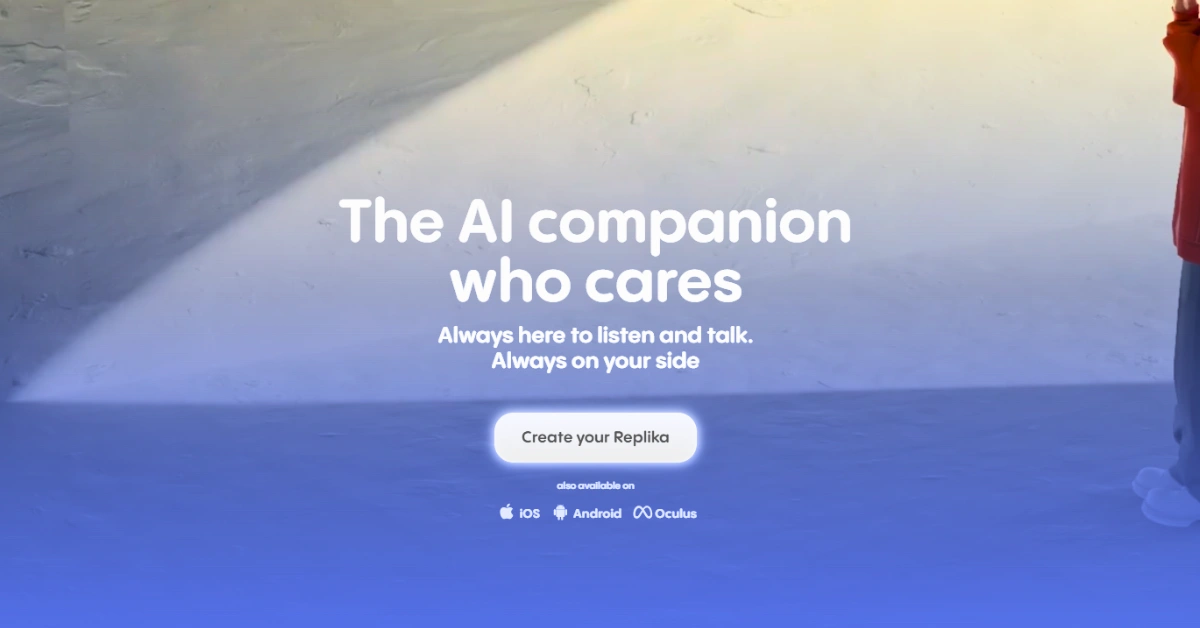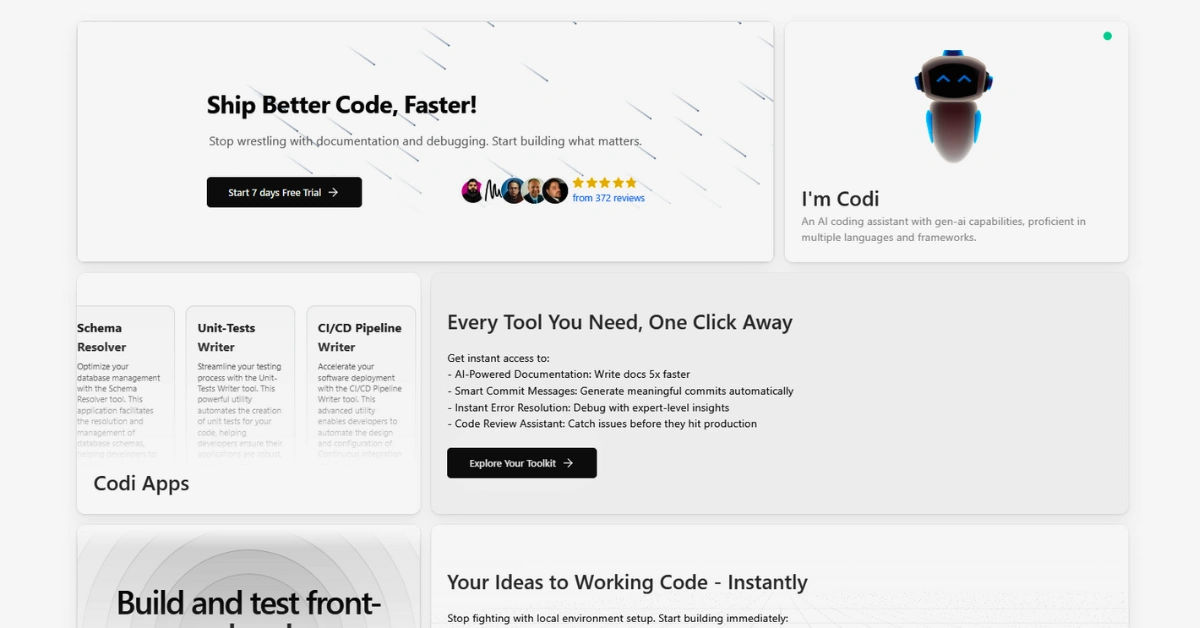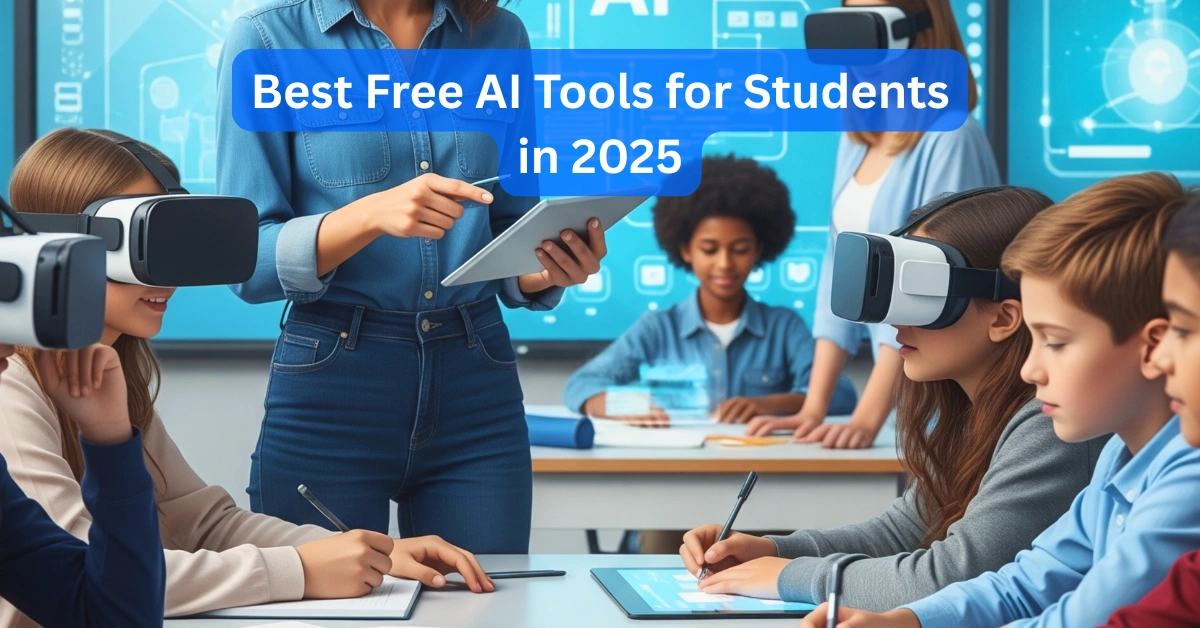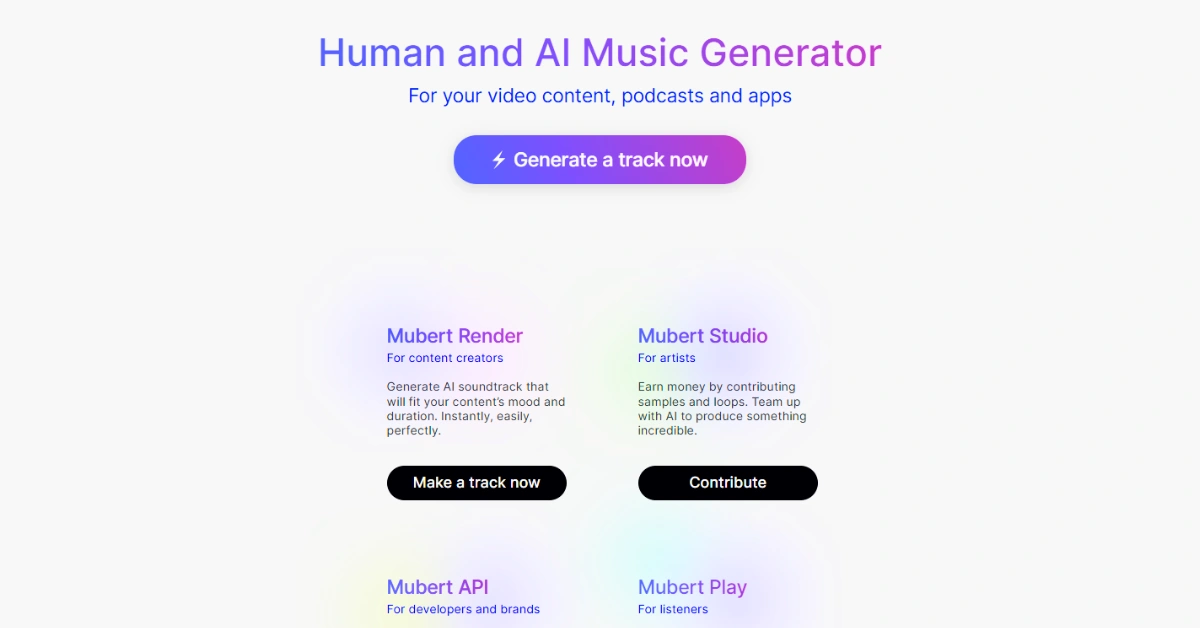Recommendation Systems in Machine Learning: Are They Supervised or Unsupervised?
Have you ever wondered how social platforms suggest products you’ll love or how streamlining platforms always seem to recommend a perfect movie for your mood?
Well, this is not magic or someone spying on you. Behind all these experiences, there is a powerful recommendation system driven by machine learning. These systems analyze your behavior, past interactions, and preferences to recommend exactly what you want, whether it’s the next video to watch on YouTube or a product to buy on Amazon.
But have you ever stopped to ask: Are these systems backed by supervised or unsupervised learning? In this article, we will explore the main difference between supervised and unsupervised learning in the context of recommendation systems, which is crucial to building accurate, efficient, and user-friendly recommendation engines.

What are Recommendation Systems?
Recommendation systems are machine learning algorithms that sneak peek into your behavior, data, and preferences to suggest relevant content, products, or services. You will see recommendations everywhere, from e-commerce sites to streaming platforms.
In simpler words, these systems play important roles in personalizing user experiences and suggesting products that align with individual tastes. Understanding the different methodologies behind these systems is critical for analyzing how they function.
Types of Recommendation Systems
Recommendation engineers are an integral part of modern recommendation systems. These engines utilize different machine-learning techniques to give users personalized suggestions in the recommendation systems.

1. Content-Based Filtering
In this approach, the machine learning algorithms suggest items by examining their inherent characteristics and matching them with the user’s past preferences. For instance, if a person frequently watches action movies, the system will suggest movies based on this genre.
In short, this method relies highly on the attributes of the items and user interaction history.
2. Collaborative Filtering
This approach works by determining patterns by analyzing user interactions. Generally, it used the principle of if and then scenario. For instance, if User A and User B share similar preferences, User A likes item X, and the system automatically recommends item X to User B. This approach is further divided into:
- User-Based Collaborative Filtering: Find users with the same preferences and suggest items that similar users have liked.
- Item-based Collaborative Filtering: Focused on finding items that are similar to those that users have liked in the past and recommend them.
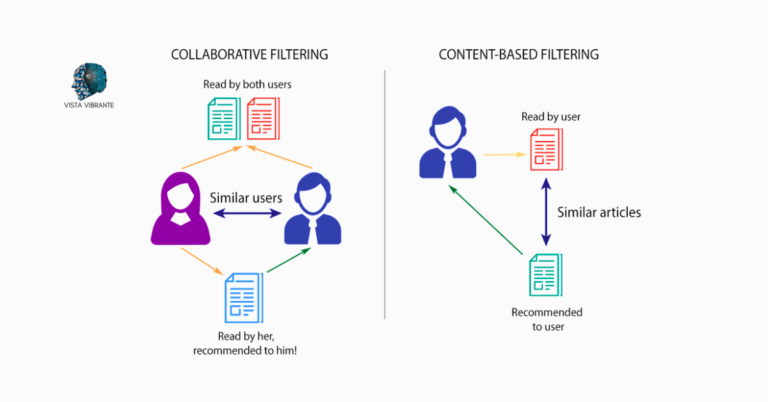
3. Hybrid Models
In this method, both the above content-based and collaborative filtering techniques are used to enhance the recommendation accuracy and remove the limitations of individual techniques. This approach uses the strengths of both methods, offering more accurate and diverse recommendations.
For instance, a hybrid model might use content-based filtering to narrow down the list of items and then use collaborative filtering to rank these items based on user preferences.
Key Machine Learning Approaches in Recommendation Systems
Recommendation systems use different machine-learning techniques to analyze user behavior and predict preferences. Let’s explore the common machine-learning approaches powering modern recommendation systems:
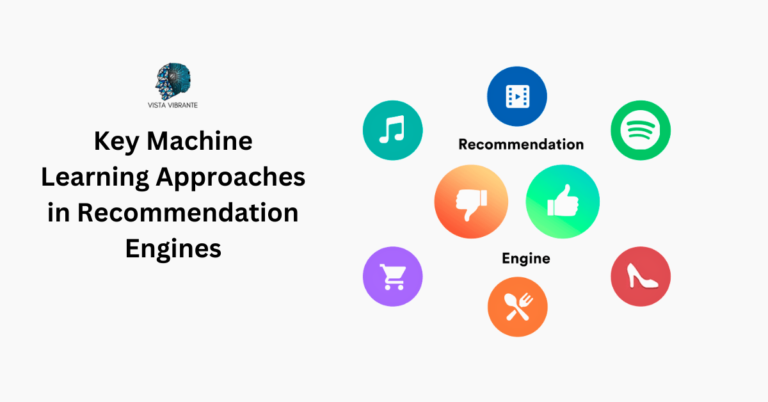
Supervised learning trained models based on labeled data, where input-output joins to guide the systems to make precise predictions. Now you must be thinking about how it works. Well, the algorithms learn from previous interactions, such as user ratings, clicks, and purchases, to suggest relevant items.
-
Use Cases in Recommendation Systems
Here are examples of supervised learning in recommendation systems:
- Movie Recommendations (Netflix, Amazon Prime): Suggest movies based on user ratings.
- E-commerce Websites (Amazon, eBay): Recommend products based on past purchases and clicks.
- Music Streaming Platforms (Spotify, Apple Music): Suggests songs based on liked or played tracks.
Unsupervised learning usually works by identifying patterns in data without any predefined labels. It involves the clustering of similar items or users. For instance, the system groups users based on shared characteristics, even if clear preferences are not defined.
-
Use Cases in Recommendation Systems
Here are use cases of unsupervised learning in recommendation systems:
- Customer Segmentation (Retail & E-commerce): Groups users with similar shopping behavior to offer personalized deals.
- Content-Based Filtering (News & Blogs): Group articles based on themes and recommends similar content.
- Video Streaming (YouTube, TikTok): Cluster viewers with similar preferences to suggest trending videos.
This approach uses the combination of both supervised and unsupervised learning to enhance recommendation accuracy by familiarizing with complex patterns in user interactions. Moreover, deep learning neural networks process gigantic amounts of data to make recommendation systems more personalized.
-
Use Cases in Recommendation Systems
This method has a use case in the following ways:
- Hybrid Filtering (Netflix, Amazon Prime): Utilize collaborative and content-based filtering to enhance precision.
- Dynamic Personalization (Google Search, Facebook Ads): Adjusts recommendations in real time based on user activity.
- AI-Powered Chatbots (E-commerce, Customer Support): Recommend relevant products or solutions using deep learning algorithms.
Supervised Learning in Recommendation Systems
Let’s explore in detail how supervised learning works in a recommendation system and what are its pros and cons.
How Supervised Learning Works in Recommendations
Supervised learning in recommendation systems depends on labeled data, for example, user rating, purchase history, and open feedback, to train models. Moreover, from this dataset, this model learns patterns and speculates user preferences for new items.
Well, the common models include Logistic Regression, Support Vector Machines, Neural Networks, and Matrix Factorization which aid in ranking and recommending products, services, and movies.
Advantages and Disadvantages of Supervised Learning
|
Advantages |
Disadvantages |
|
It is highly accurate in providing accurate recommendations when labeled data is present |
Involves extensive, high-quality labeled datasets, which can expensive |
|
Suggest recommendations tailored to the individual’s behavior, enhancing engagement |
Might not accurately recommend items for new users with less or no historical data |
|
Enable recommendation based on open behavior, making it easier to predict user preferences |
Most of the users interact with only a few items, leading to data sparsity |
Unsupervised Learning in Recommendations
In this section, we will talk about how unsupervised learning is used in recommendations and what the pros and cons of using it are.
How Unsupervised Learning Works
On the other hand, unsupervised learning in recommendation systems works by analyzing patterns in unlabeled data and linking data points. It helps in grouping similar individuals or products based on behaviors, choices, and features without any existing labels.
Additionally, the most common techniques of unsevered learning that are used in recommendations are K-means clustering and Principal Component Analysis (PCA). These techniques help segment users with the same choices or lessen dimensionality to improve recommendations.

Advantages and Disadvantages of Unsupervised Learning
|
Advantages |
Disadvantages |
|
It handles vast amounts of unlabeled data without any manual labeling |
Unlike supervised learning, the song behind recommendations is difficult to explain |
|
Detect complex connections between users and products that are not identifiable in supervised learning |
Evaluating the model’s accuracy or effectiveness is more difficult as there is no labeled data |
|
Can process large amounts of data efficiently |
How To Choose A Right Approach: Supervised vs. Unsupervised
In the recommendation system, choosing the right approach is necessary to enhance accuracy and perfection. Here are some factors that you need to consider for selecting the right approach:
Check the Data Availability
- If you have explicit user feedback, you should go for supervised learning
- If you have unlabeled data, unsupervised learning is preferable
Look for Problem Complexity
- It is very important to consider the problem you’re tackling.
- Complex relationships are better handled by unsupervised models and more straight relationships are managed perfectly with unsupervised techniques.
Analyze Dataset Size
- If you are dealing with large, sparse datasets, unsupervised learning should be the choice.
- Whereas, structured, labeled data is suitable for supervised learning.
Hybrid Recommendation Systems: Consolidating Supervised and Unsupervised Learning
What if recommendation systems need a mixed approach or combination of both supervised and unsupervised learning? Well, there is a solution and you can use hybrid models in the recommendation system.

What are Hybrid Models?
Hybrid recommendation systems usually combine both supervised and unsupervised learning approaches to improve recommendation accuracy. They used unsupervised learning for labeled data and used unsupervised learning to uncover hidden patterns and deal with more complex tasks.
Here are the common explain of hybrid approaches:
- Content-based + Collaborative Filtering: These techniques use user preferences and items similarly to collaborative filtering for accurate recommendations.
- Neural Networks + Clustering: These combinations use deep learning models trained on labeled data to refine recommendations, while clustering aids in segmenting products.
Pros and Cons of Hybrid Systems
The hybrid models offer several benefits and disadvantages. Let’s have a look at some:
|
Advantages |
Disadvantages |
|
The mixed approach offers better personalized and more relevant recommendations using the strength of both learning. |
More complexity can lead to greater computational cost. |
|
Hybrid models help fill the gap when dealing with data sparsity. |
It also struggles when there is extremely low data |
|
News users/items can be grouped based on similarities with existing users/items. |
Need robust techniques to balance different types of data effectively. |
Common Challenges in Recommendation Systems
Recommendation systems are prone to some challenges which you need to address carefully to make them accurate and precise. The common issues you can face are:

Cold Start Problem
- It is one of the most prevalent issues in which users or products have no previous interactions, making recommendations difficult.
- SOLUTION: You can use hybrid models, transfer learning, and content-based filtering to take preferences from similar users or products.
Data Sparsity
- The other problem that the recommendation system may encounter is data sparsity, which means many users offer limited interaction data, making it difficult to learn valuable patterns.
- SOLUTION: Techniques like matrix factorization and collaborative filtering to capture valuable insights from sparse data.
Scalability Issues
- Scalability is another issue. As databases increase, computing recommendations in real time becomes more tough.
- SOLUTION: For this, parallel computing, cloud-based architectures, and distributed systems should be implemented to improve efficiency and scalability.
Best Practices for Building a Recommendation System
To ensure secure, transparent, and accurate implementation of recommendation systems, you need to adhere to the following best practices.
-
Ensure Accurate Data Collection and Preprocessing
Firstly, you need to gather high-quality, multiple-user interactions from different sources. Moreover, it is important to manage missing values, mitigate noise, and normalize data for consistency. Additionally, ensure data privacy and compliance by adhering to regulations like GDPR.
-
Check for Model Evaluation Regularly
Utilize key metrics such as precision, recall, F1-score, and mean average precision (MAP) to evaluate model performance. Moreover, look for diversity and advanced techniques to avoid recurring recommendations. In addition to this, perform A/B testing to compare different models in the reaL-world ecosystem.
-
Go for Continuous Improvement
Lastly, it is essential to frequently update models with new market trends and user interactions. Moreover, employ fine-tuning techniques, such as hyperparameter optimization. Furthermore, use feedback loops to alter recommendations based on user behavior and preferences.
The Future of Recommendation Systems
In the coming year, recommendation systems will be more sophisticated as they utilize advanced AI and machine learning models. Moreover, it is anticipated that they will be seen in more applications.
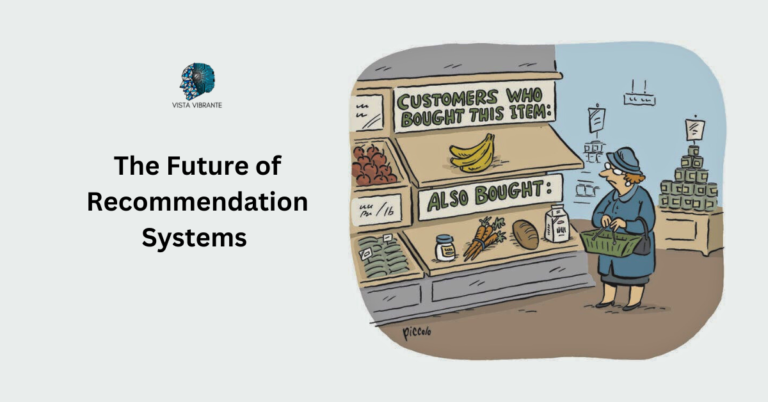
Advancements in AI and Deep Learning
- More likely, advancement in neural networks, such as deep learning models and transforms will improve recommendation accuracy.
- Reinforcement learning allows systems to maximize recommendations dynamically based on user interactions.
- Moreover, generative AI and natural language processing enhance personalization by estimating user preferences more accurately.
Personalized and Context-Aware Recommendation
- In the future, systems will be more context-aware and suggest recommendations based on location, time, and user behavior.
- Additionally, social media, browsing history, and sentiment analysis will add up to improved recommendations.
- Context-aware filtering will modify suggestions based on situational factors.
Integration with Emerging Technologies
- The future will be of voice assistants that will offer seamless, and conversational recommendations.
- Augmented Reality (AR) and Virtual Reality (VR) will offer personalized shopping and content experiences.
- The Internet of Things (IoT) will implement smart home devices, giving intelligent recommendations for daily routines.
Conclusion
Throughout this article, we explored the role of supervised and unsupervised machine learning algorithms in recommendation systems. Well, supervised learning is valuable when dealing with explicit-based recommendations. In contrast, unsupervised learning is helpful when data is sparse.
We also discussed hybrid models that use the best of both worlds, improving accuracy and adaptability. In conclusion, as machine learning continues to grow, recommendation systems will become more sophisticated, personalized, and context-aware. Our team strives to update you with innovations and the latest trends, so stay updated with our articles to check what’s going on in the recommendation world.
Frequently Asked Questions
1. What type of machine learning is a recommendation system?
Typically, recommendation systems use supervised, unsupervised, and hybrid machine learning approaches.
2. Is Netflix’s recommendation supervised or unsupervised?
3. Which algorithm is used for recommendation systems?
Generally, the most common algorithms used in these systems are collaborative filtering, content-based filtering, matrix factorization, and deep learning models.
4. Do recommender systems use reinforcement learning?
Yes! It is used in recommendation systems to maximize and increase user engagement in the long run.

